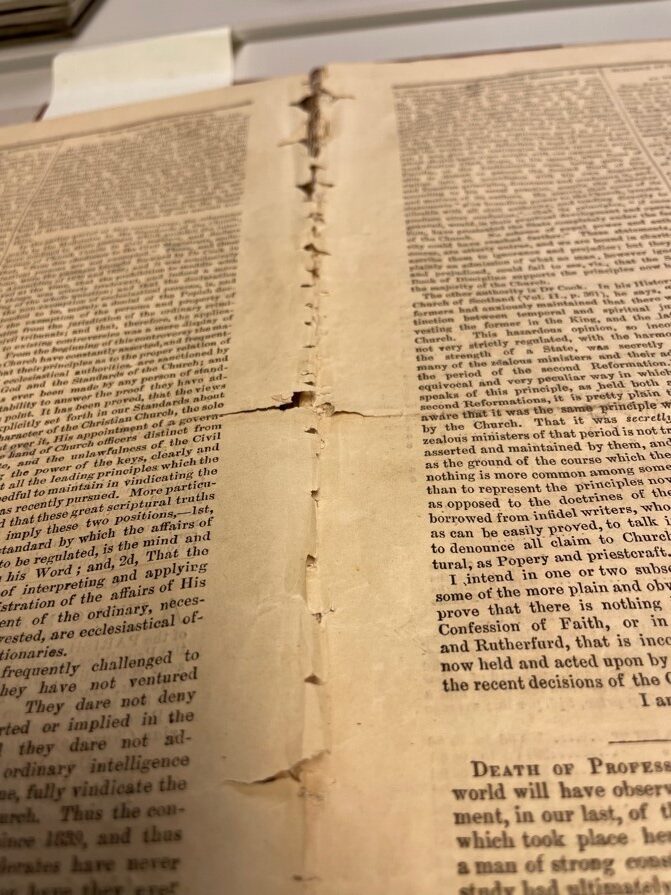Today we have the second instalment of a two-part series by Projects Conservator Mhairi Boyle. Mhairi spent April 2022 working on The Witness, a collection of Edinburgh-based newspapers held by New College Library. You can read the first part of the series here.
The first instalment of this series focused on the contextual background and the condition of The Witness newspapers. In this final instalment, I will be discussing the ethical challenges of digitisation conservation work and reveal some highlight findings from the collection.

Weak and damaged areas.
In the Conservation team we often use the terms ‘pre-digitisation treatment’ and ‘post-digitisation treatment’. When assessing objects for digitisation, it is important to consider the condition of each object and how it will be digitised. If the pressing or scanning of an object will worsen its condition, pre-digitisation conservation treatment is often recommended. If there is damage to an object that will not be made worse during the digitisation process, then it can be flagged for post-digitisation treatment. In the case of The Witness, each newspaper will be laid flat, and each page scanned. This could worsen the split areas and areas of weakness when each page is turned for scanning. When each page is pressed, the tension from the old adhesive and thread holding each volume together could also create new splits and damage. This presented a new dilemma: we had to decide whether to keep the newspapers bound, or disbind each volume.
